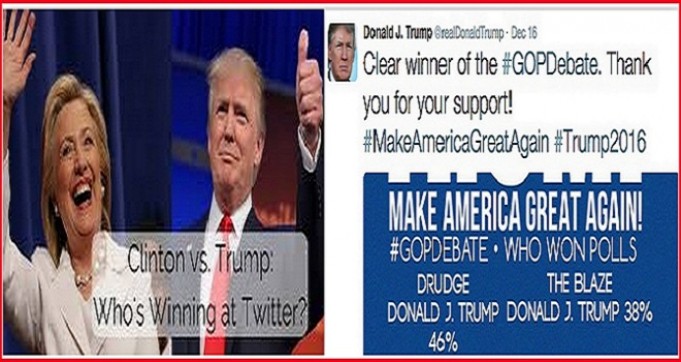The Clinton-Trump online war
The first presidential debate, one of the most watched events this election season, was not restricted to major television networks but was also streaming online from Buzzfeed to Yahoo, from Facebook to Snapchat.
In fact, ABC, NBC, CNN, Univision, Fox and others not only broadcast the debate to some 180 million TV viewers but they also streamed it on their websites as well in an increasingly keen fight to grab online viewers. Even newspapers such as the Wall Street Journal streamed the debate as did public radio stations.
The old media wants a piece of the action before the new media runs away with everything, taking along the i-Phone addicted generation. The landscape is evolving so fast, even the candidates are scrambling to keep pace and come up with new media strategies.
The amazing array of choices catered to every kind of political consumer — from the living room environment of family-friendly Facebook to the thousand soap boxes going all at once on Twitter. For those with small appetites, Snapchat was the perfect stop with tiny bites from the debate.
The candidates, Democratic Hillary Clinton and Republican Donald Trump, both know the importance of being online and that social media could be the key to unlocking voter sentiment in this extremely tight race. Clinton’s team, in fact, asked supporters in an e-mail to “advocate on every online platform on the night she goes head to head with Trump.”
Trump, meanwhile, bought a Snapchat filter in time for the debate, which framed the contest as Donald J. Trump vs. Crooked Hillary. Snapchat is used mostly by younger voters with 3per cent of the users falling between the 18 to 24-year band.
Since the veracity of Trump’s many claims - did he oppose the Iraq War and did he pay federal taxes? - is always in doubt, websites offering “live fact-checking” while the debate was on saw demand go through the roof. Media sites with fact-checkers saw a 3000 per cent increase with 1.5 million requests per second, especially when Hillary Clinton urged viewers to go to her website and follow her fact-checkers during the debate.
According to most pundits, Clinton won the debate but on Twitter, it was Trump who dominated with 62 per cent of the debate conversation going to @realDonaldTrump compared to @HillaryClinton who got 38 per cent, according to data released by Twitter. He also grabbed the three most tweeted debate moments, including one about his temperament. But much of the attention was negative; it was his stumbles and exaggerations that went viral.
Meanwhile, Facebook, which claims 1.7 billion active monthly users, teamed up with ABC News and got 18 million people to engage with the debate through posts, comments and shares. Facebook Live videos drew 55 million viewers.
Twitter teamed up with CBS News and said it was the most tweeted debate ever, far exceeding the first debate in 2012 which saw 10.3 million messages.
The enormous excitement around the presidential debates this year is because the candidates are running neck and neck and a lot depends on whether the millennials come out to vote. The best way to reach this disenchanted lot is online.
Both Clinton and Trump surrogates have a heavy presence on Twitter where every theory and every rumour must be battled in real time. The two sides are perpetually duking it out with Trump himself leading the charge, sometimes in the middle of the night.
But there is so much out there the campaigns are struggling to scrape meaning out of the statistics. No surprise that big data and data analysts are in high demand. Conventional wisdom in this election is that there is none. The use of online tools in the last two US elections by Barack Obama’s campaign seems out-of-date in 2016, according to experts.
Companies are mining the data to detect signals and selling it to the campaigns, which in turn have their own analytical teams to decipher and shape political messages. “Social intelligence” is the big new game to spot what kind of content is trending on social media.







